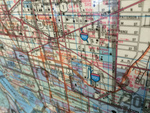Southwest Washington, which I have defined as the area west of I-5 and south of U.S. 12, is sparsely populated, and its economy is heavily dependent on the timber industry. However, the region also has the state's busiest beach resort areas -- the Long Beach Peninsula and the Central Coast area. And the often-overlooked city of Vancouver, which shares a name with the far more famous Canadian city to the north, is little more than a bedroom community for Portland, but it abounds in pioneer history.
Aside from two last rocky headlands at the mouth of the Columbia River, the coastline of southwest Washington is a tame strip of sandy beaches and windswept dunes. Grays Harbor and Willapa Bay divide this stretch of coast into three distinct strips of sand: North Beach, South Beach, and the Long Beach Peninsula. These three strands have far more in common with one another than with the wild, rock-strewn beaches to the north. Although they are far less spectacular than those to the north, the abundance of tourist accommodations along this coastal stretch makes these the favored beach-vacation destinations of many Washingtonians.
Summers along the coast tend to be short and often wet or foggy, and the coastal waters are too cold and rough for swimming (although surfing is fairly popular). Consequently, the traditional beach pursuits of swimming and sunning aren't high on vacation priority lists. Instead, these beaches rely on other activities to attract visitors. All up and down this coast, digging for razor clams is a popular pastime, though open seasons are now short and as closely regulated as the salmon-fishing seasons. The towns of Westport, at the north end of the South Beach area, and Ilwaco, at the south end of the Long Beach Peninsula, have become the region's main charter-boat ports, with Westport charter boats also doing double duty as whale-watching excursion boats. South Beach and the Long Beach Peninsula are also among the few regions in the country where cranberries are grown commercially. Long Beach, a beach resort town for more than 100 years, bills itself as the kite-flying capital of America and boasts the longest drivable beach in the world. While vacationing families fuel the local economy, oysters still reign supreme in Willapa Bay, one of the cleanest estuaries in the country.
This coast is also home to a few pockets of wildness. The Willapa National Wildlife Refuge and the Long Beach Peninsula's Leadbetter Point together host a vast number of bird species each year. Combined with the Grays Harbor National Wildlife Refuge to the north, they offer the best bird-watching in the Northwest.









